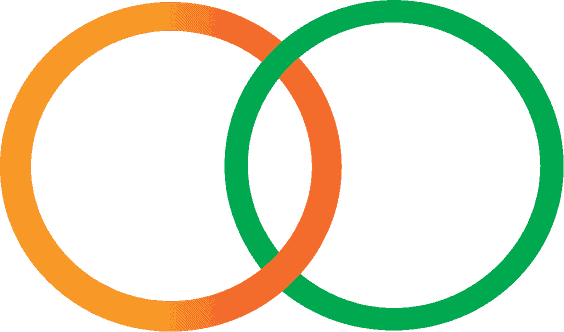Passing
Understanding the risks
A driver or passenger in a parked or stopped vehicle may open a door directly across your path of travel. Hitting an open door can cause serious injuries, but even just clipping an open door with your handlebar can throw you into traffic. Swerving to avoid an open door can cause you to fall or veer into traffic.
Many bicyclists believe they can predict when a door will open, and stop in time. In fact, a driver or passenger may not be clearly visible and can open the door without warning – and at cruising speed you can’t stop in one car length.
Many bicyclists fear being hit from behind if they ride outside the door zone. In fact, these kinds of collisions are rare on urban and suburban streets because motorists have plenty of time to notice and slow down for a bicyclist who needs to enter their path, especially a bicyclist who is clearly visible.
Knowing your options
The law allows you to move out of a bike lane or into the center of a traffic lane in order to avoid roadway hazards such as an open door.
In bike lanes that run along parallel parking, often the right half of the lane or more is the door zone. Avoiding it may mean riding along the left edge of the bike lane, on the stripe, or even outside the bike lane. Riding comfortably outside the door zone means not having to keep any of your attention on car doors. This allows you to focus on traffic around you.
Using the 5 skills
These are the skills you use to reduce your risks when passing parked or stopped cars:
Handling
- You can ride in a straight line without wobbling.
- When preparing to move left or right, you can look back over your shoulder without swerving.
- You can give a hand signal without swerving.
- You can slow or stop quickly without losing control of your bike.
Cooperation
- When passing parked cars, you ride comfortably outside the door zone (even if you have to move out of a bike lane to do so).
- You use a white headlight when riding anytime after dark, to make yourself visible to persons ahead and to the side, including those entering or leaving their car.
- You use a red tail light and rear reflector at night so drivers behind can easily notice, recognize and avoid you.
Positioning
- You look ahead for parked cars, and move into a safe line of travel outside the door zone before you reach them — even if you have to move out of a bike lane to do so.
- If you need to shift left or right to avoid the door zone ahead, you first signal to drivers behind you, and prepare to slow or stop if it’s not yet safe to make your move.
Responsiveness
- If you must briefly ride with any part of your bicycle inside the door zone, you slow to walking speed to be able to stop in one car length, and prepare to apply your brakes.
- You know and have practiced the “quick stop” technique. In a “quick stop”, you stop your bike safely in the shortest possible distance by using both brakes, if possible, and shifting your weight back on the seat. You can learn this skill in a bicycle safety class led by a certified instructor.
Protection
- You know your helmet and gloves will prevent or reduce injuries in case of a fall.


